If you are wondering how to lose extra pounds, not just quickly, to celebrate some anniversary, button up your favorite outfit, namely -how to lose weight properly, Congratulations! This means you have chosen the right vector and are moving in the right direction strategically.
Let's find out what it means to lose weight properly and how you can lose weightRight, but as -wrong? Everything here is quite simple.
If you're still at your unwanted weight despite all your previous efforts to lose those pesky pounds, chances are you're losing weight incorrectly. How to lose weight properly?
It is clear that those kilograms do not return and, of course, do not harm health, because no one wants to lose weight, but no one wants to pay for the results achieved with ulcers and taking pills for life.
Improper weight loss leads to obesity
Increasingly, nutrition experts believe that improper weight loss is one of the main causes of the obesity epidemic. The more people try to lose weight, the more weight they gain as a result. It's embarrassing, annoying, but it's true!
Obviously, the problem lies in weight loss methods that are harmful to the body, at best leading to the lost weight returning, and at worst leading to health problems.
So let's see how to lose weight correctly and maintain your results forever! We have compiled for you the TOP 10 principles of reasonable nutrition to help you get in shape even without dieting.
By following these tips systematically, confidently and consciously, you will enjoy every meal, without strict food restrictions, and the extra pounds willYou no longer feel hungry and have severe, familiar cravings. to everyone I've ever dieted with.
Principle 1. Lose weight slowly and properly
Let's immediately agree with you (you in turn with yourself) that you should forget about such attractive diets: 10 kg in 10 days, lose 5 kg per week, etc. v.
Of course, if you try very hard, gather willpower and do not neglect a strict mono diet (most likely, it will be one of its varieties), then most likely you will achieveResults as promised.
But this will have nothing to do with the question of how to lose weight correctly. In this case, another question is relevant: at what cost?

It is impossible to eat buckwheat and cabbage leaves all your life, giving up carbohydrates forever is unthinkable. As soon as the eliminated food products return to your refrigerator, your table, your plate, the kilos you have so painstakingly lost will not be long gone.
Principle 2. How to lose weight properly - the calorie counter knows
Anyone who wants to lose weight effectively, seriously and permanently, needs to remember two important words: "calorie count". And it makes no difference where they come from.
- If you consume more calories than you burn, your weight will increase.
- If you burn more calories than you consume, your weight will decrease.

So the goal of any diet is to reduce the number of calories you consume through food. This can be done in many ways: you can choose foods that are lower in calories, you can eat less overall, or you can combine both methods in a way that works for you.
However, it is the drastic reduction in calorie intake that is the reason why many weight loss attempts are unsuccessful and therefore inaccurate.
- If you skip meals or don't feel satisfied because your portions are too small, you will feel hungry and constantly crave snacks or high-calorie foods.
- If you have ever been on a diet for at least a week, then you know how the psychological - emotional background worsens, the mood worsens, irritability appears for any reason, leading to a person's attackFamily and Friends. .
Principle 3. The correct way to lose weight while still getting enough nutrition is to regularly eat many small meals.
The simplest strategy for healthy weight loss is to combine three small nutritious meals with a mid-day and evening snack. Thanks to this nutritional system, you can eat up to five meals a day!
Agree, this is much better than skipping breakfast, lunch or dinner. Frequent meals will prevent hunger pangs from developing, and small, dense, nutrient-dense portions ensure you consume enough nutrients without excess calories.
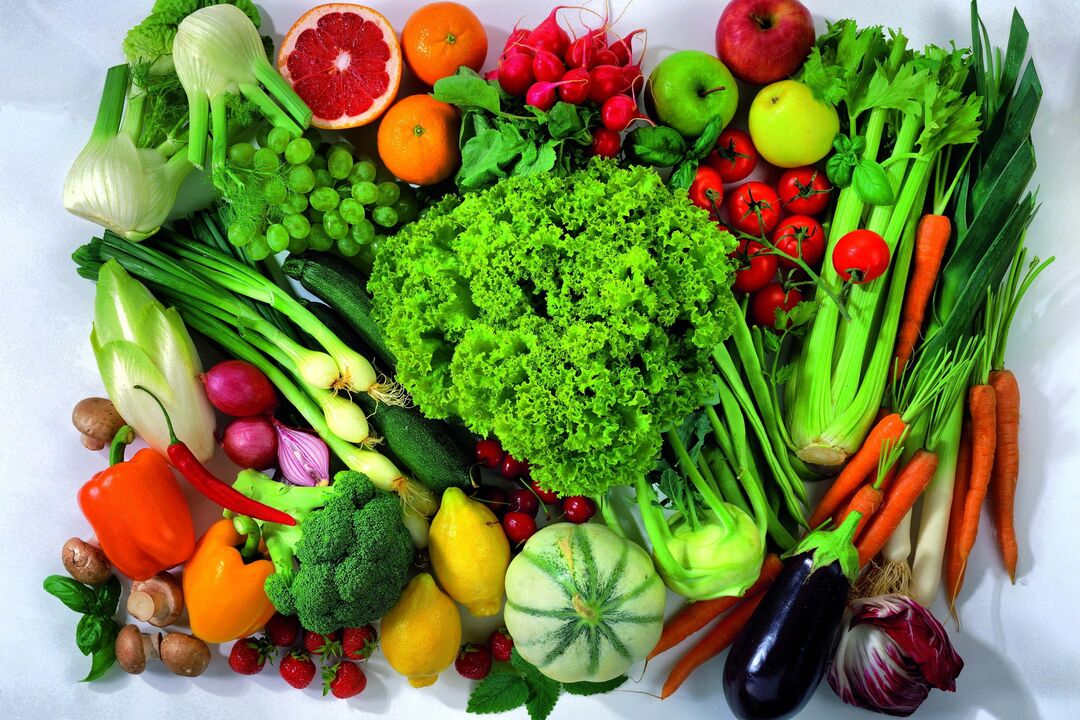
Note that three small meals plus snacks is not the same as a chewing habit. It involves constantly eating something throughout the day without taking into account feelings of hunger and fullness. This eating behavior leads to excess calories and weight gain.
Regularly dividing your meals into small portions will help you avoid falling into the despair and depression of a starving person. After all, soon you will be able to snack again, how and with what – the following principles will tell you.
The main thing that people who lost weight using this system noted was that they had never eaten so much during such weight loss. And it is easier for the body to get rid of fat reserves: regular meals not only increase metabolism, but also signal to the body that there is nothing to fear, there is no danger of hunger and noneed to store anything for the body. future use.
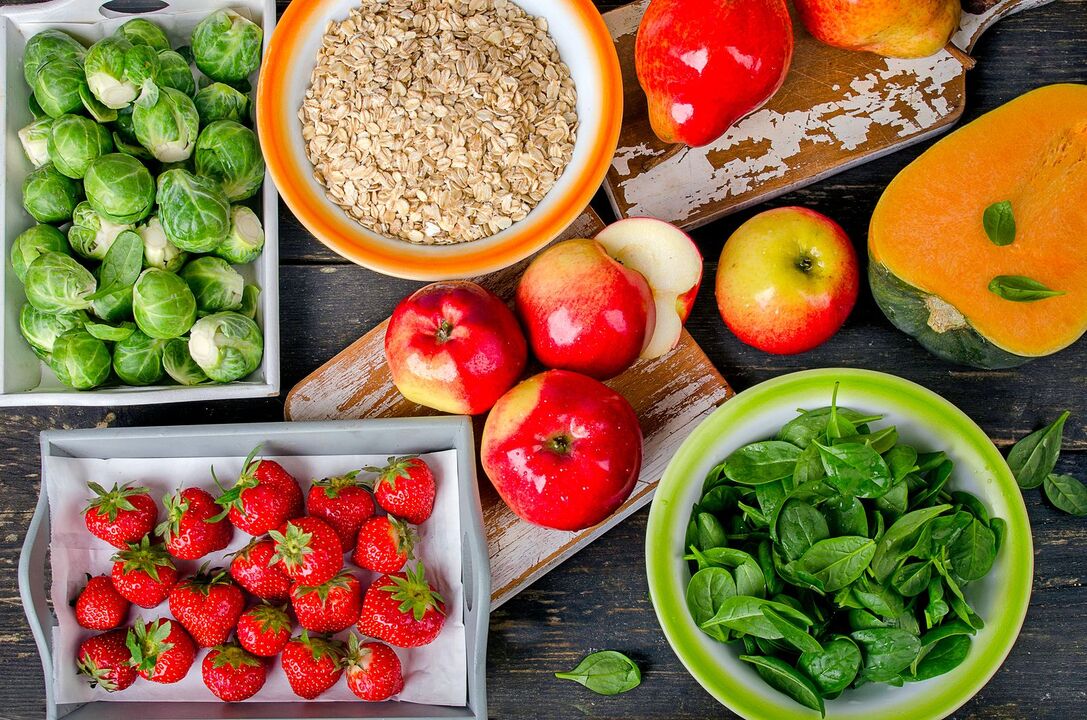
Here are simple and easy-to-follow tips to help you eat five meals a day more easily and make your meals as varied as possible:
- Plan ahead what you will eat during the day, including snacks. It's better to do this the day before.
- If you decide to lose weight the right way, feel free to bring healthy foods to work or school in convenient, sealed containers.
- Prepare food for the new day in the evening. Then you can always eat foods with pre-calculated calorie content, instead of buying snacks and other high-calorie products that are the first available at the store when you want them. eat.
- Don't rely on foods that feel like snacks (such as bananas or apples), even if you really like them. Monotony is also a kind of hunger. Five small meals per day and an abundance of low-calorie and low-glycemic index foods make it possible to eat a varied diet while staying within your chosen daily "calorie corridor".
Principle 4. To lose weight properly, don't deprive your body of nutrients, just choose the optimal ratio
Changing the composition of nutrients in the diet and the effect of such experiments in accelerating weight loss remains the focus of many nutritionists. Let's dwell on this issue in more detail, because many diets preach: give up carbohydrates, eliminate fats from your diet, load up on protein - and slimness is guaranteed.
- In general, recommended macronutrient distribution ranges suggest that 45 to 60% of calories should come from carbohydrates, 20 to 35% from fat, and 10 to 35% from protein.
- Some nutritionists believe that a healthier approach to weight loss is to increase protein intake by 45% and reduce carbohydrate intake by 25%.
- Some studies report that high-protein diets lead to greater weight loss than high-carbohydrate diets with the same number of calories. And a low-carbohydrate and high-protein diet also prevents weight gain after reaching the target value.
Carbohydrates – enemy or friend of those who decide to lose weight properly?
The hypothesis that carbohydrates cause weight gain and therefore reducing the amount of carbohydrates in the diet leads to weight loss has become popular and is pursued by many people.
Surely you or someone around you has also tried to lose weight on a low-carbohydrate diet. While it's impossible to completely eliminate carbohydrates from your diet, you can significantly reduce your consumption of them, so it would be more accurate to call this type of diet low-carbohydrate.
According to scientists' findings, increased consumption of sugary, carbohydrate-rich beverages is correlated with weight gain observed in both children and adults in recent decades. It is reasonable to assume that as carbohydrate consumption increases, waist size also increases. But how exactly do carbohydrates affect body fat growth?
Some researchers say it's all to do with insulin, others say it's all to do with high glycemic index foods, and still others think that carbohydrates alter appetite-suppressing hormones, which arewhy hunger occurs after eating foods containing carbohydrates.
The body needs insulin to process glucose. After eating, it reacts to the increase in blood sugar and transports it to the cells.
The more carbohydrates a person consumes, the more insulin is needed to maintain normal blood sugar levels. But this is not the only function of insulin. This pancreatic hormone also promotes fatty acid synthesis and lipogenesis in the liver.
Excess glucose that is not converted into glycogen and not used for energy is converted into fatty acids and stored as fat.
Theoretically, the more carbohydrates the body eats, the more insulin the pancreas secretes and the greater the likelihood that glucose will be stored as fatty acids in adipocytes (fat cells).
Insulin also prevents beta-oxidation of fatty acids by inhibiting lipolysis of fat stored in adipose tissue, causing fatty acids to become trapped in adipocytes.
Thus, the effect of insulin on lipid metabolism creates a tendency for fat concentration. To avoid elevated insulin levels, it makes sense to switch to a low-carbohydrate diet.
But there is another side to the coin. Diet composition can influence the production of hunger-suppressing hormones. Again, hunger increases as ghrelin levels increase and decreases as leptin levels increase.
Choose carbohydrates with a low glycemic index
The evidence supporting the idea that carbohydrates contribute to weight gain is promising. . . But!
When researchers examined the effects of calorie-matched diets that were either high-carb/low-fat or high-protein/high-fat/low-carb diets on weight loss, they found that diets rich inprotein brings no benefit: weight loss is just the same!
In addition, carbohydrate restriction significantly reduces the quality of the diet and the choice of dishes in general. Do you remember what you ate while on a low-carb diet?
It is very difficult to follow a strict low-carb diet and at the same time lead an active lifestyle: work, study, drive, play sports.
"A diet based on slightly restricting daily calories (10-15% of normal) and significantly limiting foods with a high glycemic index will work well. First of all thatis sugar and products containing sugar. Plus diet and less red meat. "
If you are really wondering how to lose weight properly, remember these simple rules:
- A balanced diet for weight loss should include whole grains, legumes, fresh fruits and vegetables and as few high-glycemic index carbohydrates as possible.
- Leave simple carbohydrates on the store shelf and take complex carbohydrates with you.
- If you add foods rich in saturated fats to your diet, such as whole milk, whole milk cheese, fatty meats, butter, they will affect your cardiovascular system. Replace them with white meat, skinless chicken, fish, nuts and oils, which are not only good for your waistline but also for your health (but remember: even unsaturated fats contain 9calories per gram, so don't eat too many. Nuts and oils, no matter how healthy they are - it's too easy to get too many calories).
- The best combination for weight loss is low-calorie foods: fruits, vegetables, whole grains, some protein, and some fat. This is a combination of all 5 main food groups, balanced and able to meet nutritional needs.
Principle 5. When you lose weight properly, volume is important.
In this case, we are not talking about your form but about the content on your disk. Both meals and snacks should be sized enough to leave you feeling full and satisfied.
A healthy diet with appropriate weight loss strategies includes:
- consumption of foods with low energy density and high volume;
- refuse foods with high energy density and small volume, which can easily add to your daily calorie intake but still do not make you feel full;
- Emphasis on low-calorie "bulk" foods: vegetables with high water content and fruits, which will help you feel full quickly and reduce hunger and the number of calories consumed.
In fact, if you eat a fairly large salad at the beginning of a meal—high volume, low energy density—you'll likely consume at least 10% fewer calories than you would otherwise.
The same effect can be achieved if you add vegetables to soups and sandwiches - the portion size will increase, the feeling of fullness will occur sooner and you will consume less foods with high energy density
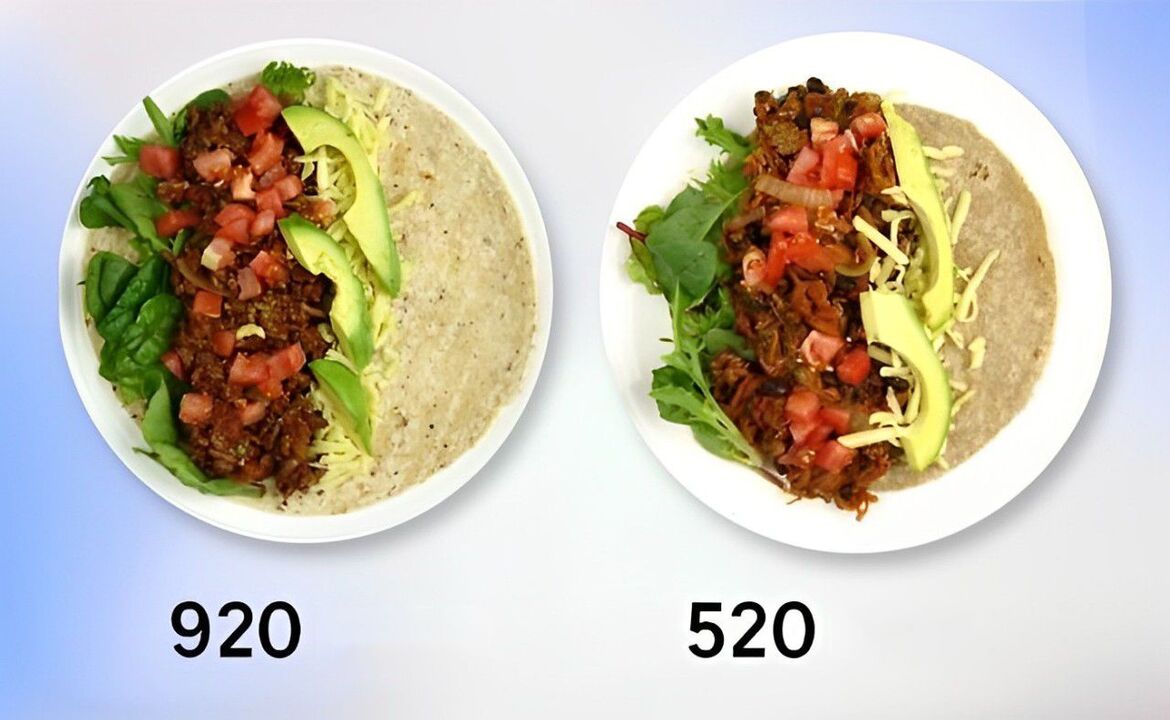
Energy density of food
- Short: These foods have seven-tenths to one-and-a-half calories per gram and are high in water and fiber. Examples include most vegetables and fruits, including tomatoes, melons, strawberries, broccoli, and cauliflower. And also soups with light broth, yogurt and cheese.
- Medium:These products contain one and a half to four calories per gram, plus they contain less water. These include baked goods, hard-boiled eggs, dried fruit, fillets, hummus, wholemeal bread and cheese.
- High:These foods have 4 to 9 calories per gram and are low in water. These include chips, cookies, crackers, cakes, butter, butter, fatty meats, and bacon.
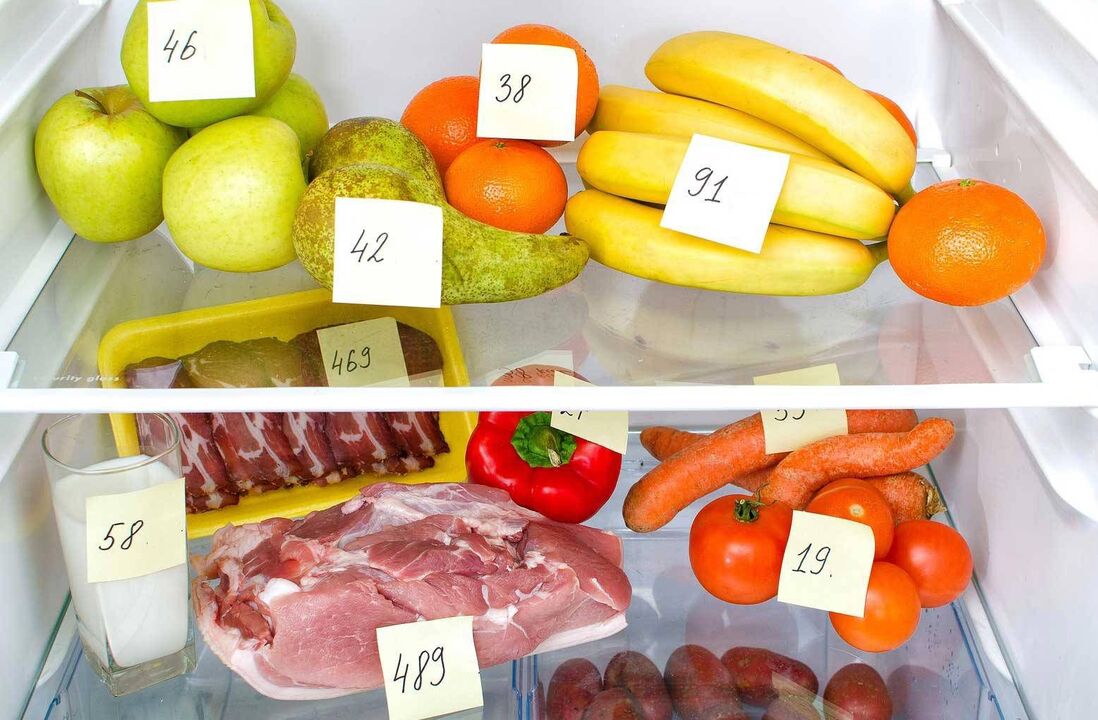
The main thing to remember is that the basis of the diet should be foods with not too high energy density with high fiber and water content, the rest can be eaten little by little - and the result is a dietYour drink will be balanced. and your weight will decrease.
Principle 6. Fiber and water will help you lose weight properly
Fiber promotes satiety and is found in most fruits and vegetables. It has been proven that overweight people consume less of this substance than people of normal weight. This is why fiber-rich foods are an important part of a weight loss diet.
It has long been a truism that you should drink more water when losing weight.
Let's add some helpful tips for each day:
- You should drink non-carbonated drinks, without flavorings or additives (as a rule, they are all sweet, that is, they contain carbohydrates that are not necessary for you);
- Always carry a bottle of water in your bag, keep it in your car and on your desk;
- Do not drink a glass in one gulp, it is better to drink small and frequent sips;
- water should not be too cold, room temperature is optimal;
- If you drink half a glass of water 10-15 minutes before a meal, you will most likely eat a little less.
"Overeating is one of the main causes of obesity. The problem is that a person gets used to the feeling of fullness in the stomach and then no longer notices it. That is why developing the habitEating healthy is important. "
Principle 7. Slimming starts with the gut - how to lose weight properly with knowledge of the microbiome
Eating more plant foods changes the bacteria in your digestive tract in ways that can have a positive impact on weight.
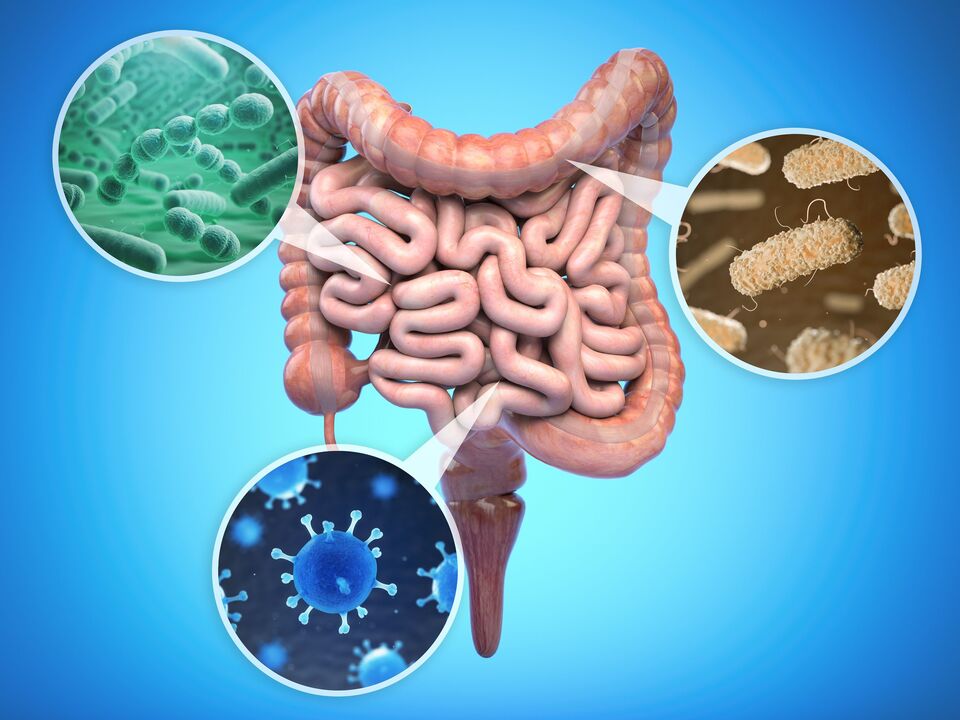
The term "microbiome" itself refers to the billions of microscopic organisms that live in the human body, including the gastrointestinal tract, skin, lungs, genital tract, and oral cavity.
Most of them are concentrated in the colon, where they participate in metabolic functions.
For example, gut bacteria silently do many beneficial things for humans:
- helps digestion;
- affects metabolism;
- extract energy from indigestible food;
- synthesize vitamins, including vitamin K;
- regulate adipose tissue composition;
- Controls peptides released in the digestive tract.
There are more than a thousand species of bacteria living in the intestines. They vary from person to person, regardless of age, gender, ethnicity and body mass index.
Recently, scientists have discovered a link between certain bacteria and obesity. If this is true, can we change the composition of our gut bacteria and stop the obesity epidemic?
How you eat, both long and short term, will determine the type of bacteria you will have in your gut and how they will manifest.
Dietary changes influence bacterial metabolism and the body's immune function by fermenting nutrients and altering the intestinal barrier - allowing bacteria and other intestinal organismsenters the bloodstream, turning certain genes on or off.
By understanding the role of diet and gut bacteria, new ways to prevent obesity may be found.
Principle 8. How to lose weight properly? Moving!
Regular physical activity not only increases the daily calorie deficit needed to lose weight naturally, but also helps reduce sedentary habits, which are often accompanied by the urge to chew on something. By walking, you burn calories. Sitting in front of the TV with a bag of chips, you, in turn, type.
People should spend an hour to an hour and a half each day doing moderate physical activity, which can help prevent weight gain or promote weight loss.
Moderate physical activity is walking at a speed of five kilometers per hour and equivalent activities: light gardening, cycling, swimming.
The longer you exercise, the more oxygen is consumed and the higher your metabolic rate. Accordingly, more calories are burned during the day, even when resting.
Well, if you combine cardiovascular exercises and strength exercises, your metabolism will speed up even more - muscles need more energy. Remember that a person who weighs more than 70 kg will burn more calories and a person who weighs less will burn less calories.
Research shows that walking ten thousand steps a day (that's about seven kilometers) is enough to significantly reduce the risk of obesity. But people walk an average of nine hundred to three thousand steps, and to increase this number to ten thousand, most people need to make a conscious effort.
Principle 9. Are you losing weight the right way? Understand the nature of aerobic and anaerobic exercise
Even if you are very far from sports, to follow the path of reasonable weight loss, you need to regulate your life not only with nutrition, but also with movement.
It is not necessary to set sports records, just increase physical activity, not on a whim, but completely consciously and purposefully. You can only move for so long, but with the mind in mind, it is not without reason that there are special groups of weight loss exercises.

So, what are the potential benefits of different types and intensities of exercise when it comes to weight loss?
- Aerobic exercise is low to moderate intensity physical activity that activates aerobic reactions to produce adenosine triphosphate. Carbohydrates, fats and proteins provide energy for aerobic exercise, be it brisk walking, jogging, hiking or skiing.
- Anaerobic exercises include weightlifting, sprinting, jumping rope, and stair climbing. They are more intense than aerobic exercises, plus shorter in duration, because they simply cannot be sustained as long as lower intensity loads. With anaerobic exercise, less fat is oxidized and more glycogen and glucose are used for energy production.
Although aerobic exercise (moderate physical activity) offers many health benefits, such as helping to control blood sugar, lower blood pressure and increase high-density lipoprotein levels, especially in peopleoverweight and obese, research shows that in the context of weight loss, they yield negligible results.
Combine exercise and weight loss properly
In a recent study conducted at American Duke University (Durham, North Carolina, USA), scientists observed subjects (there were more than two hundred volunteers) who were overweight and obese. The first group performed aerobic exercises, the second group worked with weights, the third group did a combination of both.
The first group ran about 20 km per week on a treadmill or other equivalent activity. The second group trained with weights three times a week: three sets per day, eight to twelve repetitions per set. A third group did both.
After 10 weeks, the first and third groups lost more weight and fat than the second group. It is interesting to note that the third group also had a significant reduction in waist circumference, which was not observed in the other groups.
Another study tested the hypothesis that short-term aerobic activity combined with anaerobic exercise ensures better results than aerobic activity alone.
Sixteen obese people were divided into two groups. The first person did half an hour of aerobic exercise for four weeks, while the second person did 25 minutes of aerobic exercise and an additional 5 minutes of anaerobic exercise.
These five minutes resulted in a significant reduction in body fat compared to the results of the first group.
Total body fat, visceral fat and belly fat also decreased significantly. Add anaerobic exercises to your workout and accumulated fat will be broken down more actively.
It is also important to choose appropriate exercises with heavy weights so as not to harm yourself.
Principle 10. Don't deviate from your plan: motivation and confidence are the most important things to follow your weight loss plan properly
How many good initiatives to lose weight have failed not because of the impossibility of losing weight, the genetic tendency to be overweight and other reasons given by overweight people, but because of banal laziness.
If you seriously decide that this time will be your last, be consistent and methodical. It's not too difficult and can even become an interesting task, especially if you awaken your passion for sports and your will to win.

How to do it? Here are some tips:
A food diary or food diary will be a great help in systematizing the weight loss process according to the rules described above and, most importantly, increasing motivation.
A food diary will allow you to track what you eat during the day, when, where and how much, what your mood is like and how physically hungry you are. Using this information, you can change your environment, your response to that environment, or both to improve your eating behavior and change your weight.
Even if you have been overweight all your life, this can only mean one thing: all attempts to lose weight are not suitable for your body. Try again by applying the 10 principles of losing weight properly!






























